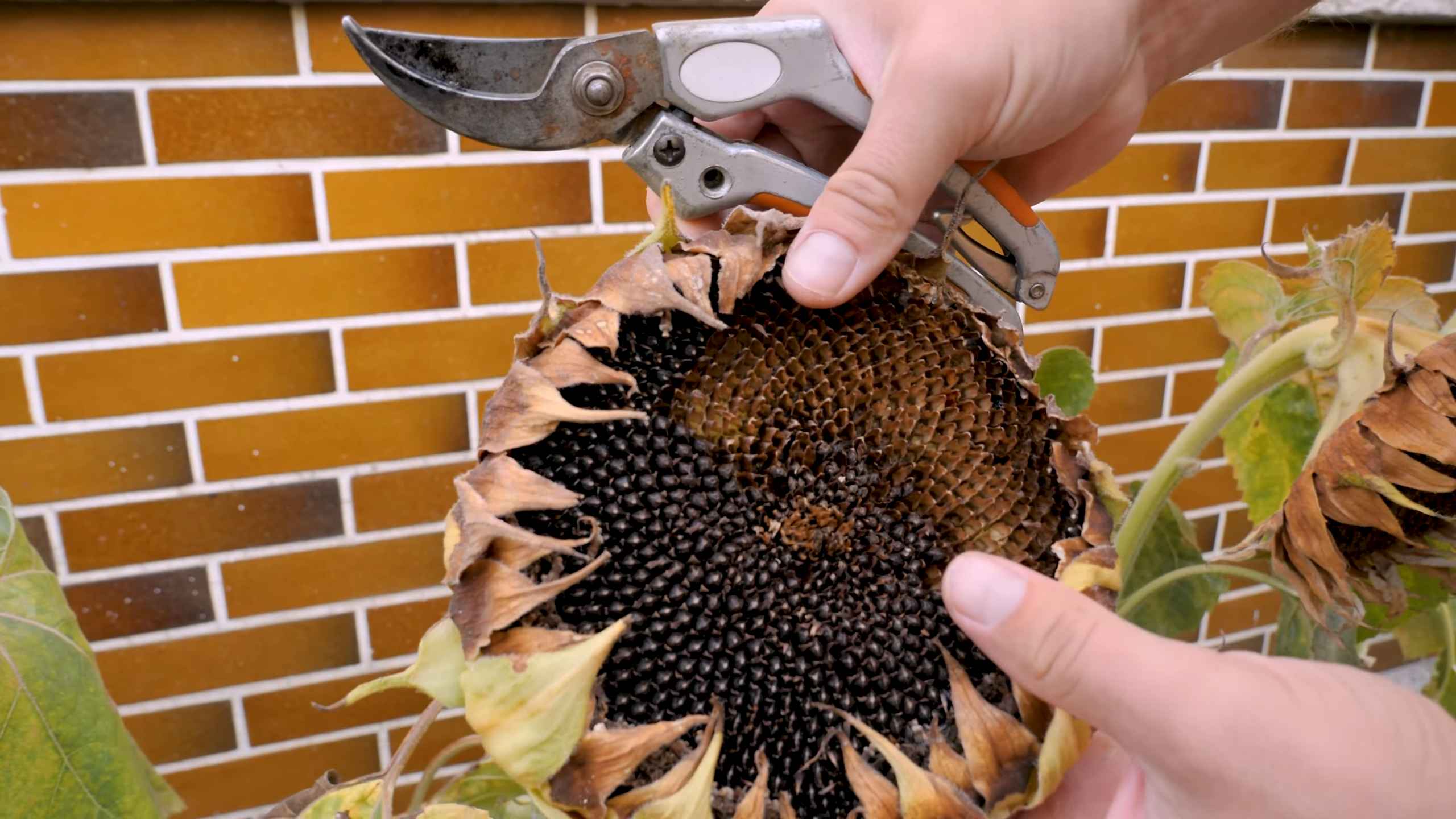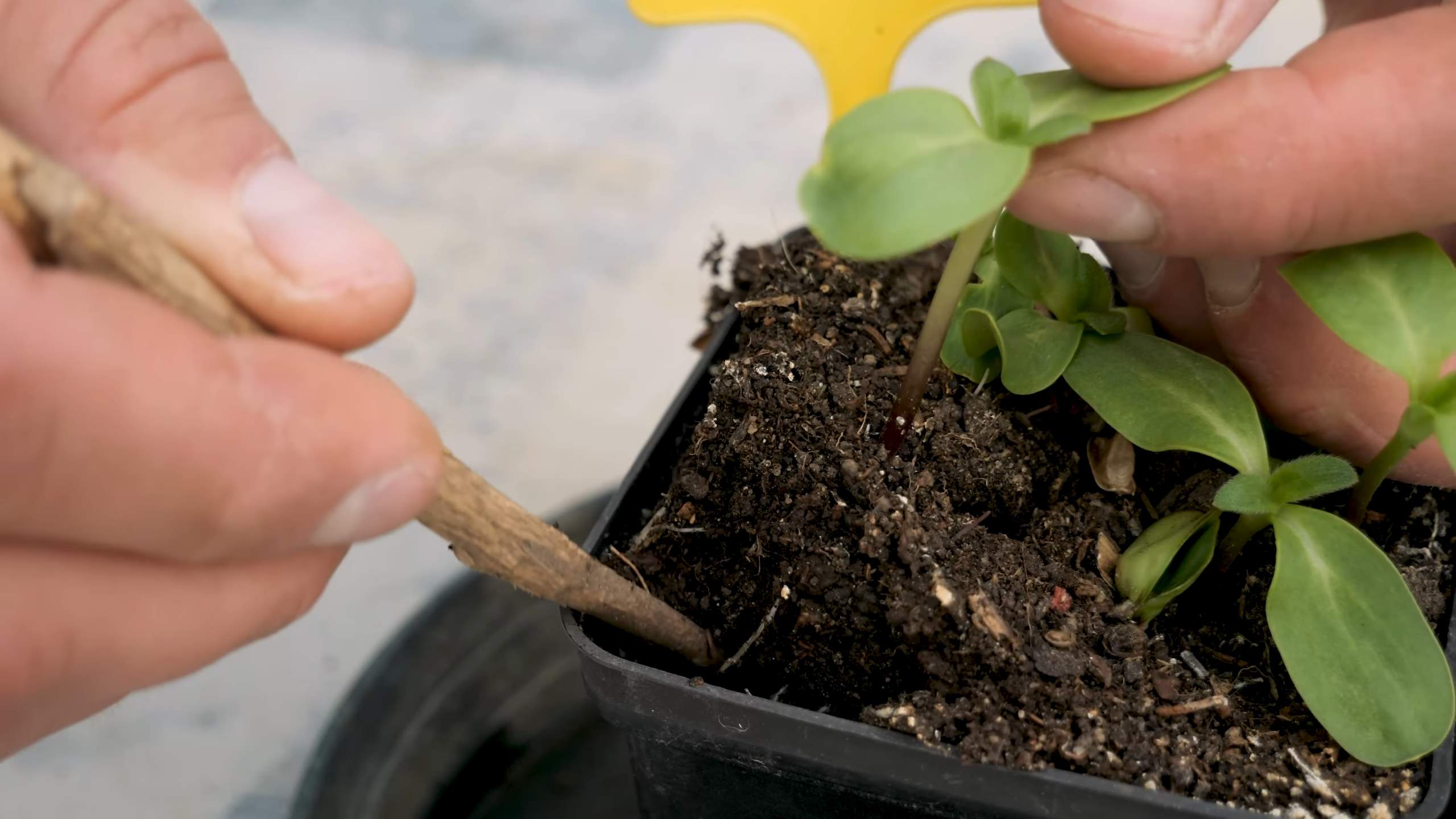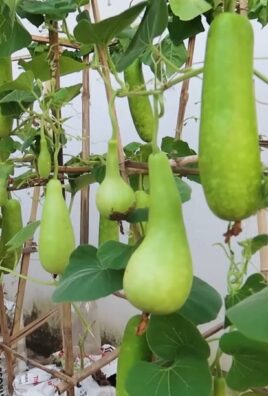Growing Sunflowers in Pots: Imagine waking up to the cheerful faces of vibrant sunflowers, right on your balcony or patio! It’s easier than you think, and this DIY guide will show you exactly how to bring that sunshine into your life, even without a sprawling garden. For centuries, sunflowers have symbolized adoration, loyalty, and longevity, with roots stretching back to North America where indigenous peoples cultivated them for food, oil, and medicinal purposes. Now, you can continue this beautiful tradition in your own small space.
I know what you’re thinking: “Sunflowers are huge! Can I really grow them in pots?” Absolutely! Many dwarf varieties are perfectly suited for container gardening, and with a few simple tricks, you can enjoy these majestic blooms even if you’re short on space. This DIY guide is your key to unlocking the secrets of growing sunflowers in pots successfully. We’ll cover everything from choosing the right pot and soil to providing the perfect amount of sunlight and water.
In today’s busy world, finding moments of joy and connection with nature is more important than ever. Growing sunflowers in pots offers a therapeutic and rewarding experience, allowing you to nurture life and witness the beauty of nature firsthand. Plus, who wouldn’t want to impress their friends and neighbors with a stunning display of homegrown sunflowers? Let’s get started and transform your outdoor space into a sunny paradise!

Growing Sunflowers in Pots: A Sunny DIY Project!
Hey there, fellow plant enthusiasts! I’m so excited to share my experience with growing sunflowers in pots. It’s a surprisingly easy and rewarding project, even if you don’t have a huge garden. Trust me, nothing beats waking up to those cheerful, sunny faces! So, let’s dive in and get our hands dirty!
Choosing the Right Sunflower Variety
Before we even think about soil, we need to pick the right sunflower variety. Not all sunflowers are created equal, especially when it comes to container gardening. We need to consider size!
* Dwarf Varieties are Key: Opt for dwarf or compact varieties. These are specifically bred to stay smaller, making them perfect for pots. Some great options include ‘Teddy Bear’ (fluffy, double blooms), ‘Elf’ (very compact), ‘Little Becka’ (bi-colored), and ‘Sundance Kid’ (early bloomer).
* Consider Bloom Size: Even dwarf varieties can have different bloom sizes. Think about how large you want the flower heads to be in relation to your pot.
* Read the Seed Packet: Always, always read the seed packet! It will tell you the mature height of the plant, which is crucial for choosing the right pot size.
Gathering Your Supplies
Okay, now that we’ve chosen our sunflower superstar, let’s gather our supplies. This is where the fun begins!
* Sunflower Seeds: Obviously! Make sure they are fresh and from a reputable source.
* Pots: Choose pots that are at least 12 inches in diameter and depth for dwarf varieties. Bigger is always better, as it gives the roots more room to grow. Make sure your pot has drainage holes! This is super important to prevent root rot.
* Potting Mix: Use a high-quality potting mix, not garden soil. Potting mix is lighter and provides better drainage. I like to use a mix that contains peat moss, perlite, and vermiculite.
* Slow-Release Fertilizer: This will provide your sunflowers with a steady supply of nutrients throughout the growing season.
* Watering Can or Hose: For, well, watering!
* Optional:
* Plant labels: To keep track of what you planted where.
* Gardening gloves: To keep your hands clean.
* Trowel: For scooping potting mix.
* Stakes: For taller varieties that might need support.
Planting Your Sunflower Seeds
Alright, let’s get those seeds in the ground (or, in this case, the pot!).
1. Fill the Pot: Fill your pot with potting mix, leaving about an inch or two of space at the top.
2. Sow the Seeds: Make small holes about an inch deep. I usually plant 2-3 seeds per pot, just in case some don’t germinate. Space them a few inches apart.
3. Cover the Seeds: Gently cover the seeds with potting mix.
4. Water Thoroughly: Water the pot thoroughly until water drains out of the drainage holes. This helps settle the soil and ensures the seeds have enough moisture to germinate.
5. Place in a Sunny Location: Sunflowers need at least 6-8 hours of direct sunlight per day. Place your pot in the sunniest spot you can find.
6. Keep the Soil Moist: Keep the soil consistently moist, but not soggy. Check the soil moisture daily and water when the top inch feels dry.
Caring for Your Sunflowers
Now comes the waiting game! But don’t worry, there are things we can do to help our sunflowers thrive.
1. Thin Seedlings (If Necessary): Once the seedlings emerge (usually within a week or two), thin them out to one plant per pot if you planted multiple seeds. Choose the strongest-looking seedling and gently snip off the others at the soil line.
2. Fertilize Regularly: Start fertilizing your sunflowers about a month after they germinate. Use a balanced liquid fertilizer diluted to half strength every 2-3 weeks. Alternatively, you can top-dress with a slow-release fertilizer according to the package directions.
3. Watering: Sunflowers need consistent watering, especially during hot weather. Check the soil moisture regularly and water when the top inch feels dry. Avoid overwatering, as this can lead to root rot.
4. Support (If Needed): Taller varieties may need staking to prevent them from toppling over, especially in windy conditions. Insert a stake into the pot near the plant and gently tie the stem to the stake with soft twine.
5. Pest Control: Keep an eye out for pests like aphids, spider mites, and snails. If you spot any pests, treat them with insecticidal soap or neem oil.
6. Deadheading: Once the flowers start to fade, deadhead them by cutting off the spent flower heads. This will encourage the plant to produce more blooms.
Troubleshooting Common Problems
Even with the best care, sometimes things can go wrong. Here are some common problems you might encounter and how to fix them.
* Yellowing Leaves: This could be a sign of overwatering, underwatering, or nutrient deficiency. Check the soil moisture and adjust your watering accordingly. If the soil is consistently moist, reduce watering. If the soil is dry, water more frequently. If the leaves are yellowing all over, it could be a nutrient deficiency. Fertilize with a balanced fertilizer.
* Leggy Growth: This means the plant is not getting enough sunlight. Move the pot to a sunnier location.
* Drooping Leaves: This could be a sign of underwatering or heat stress. Water the plant thoroughly and move it to a shadier location during the hottest part of the day.
* Lack of Blooms: This could be due to insufficient sunlight, over-fertilizing with nitrogen, or not deadheading spent flowers. Make sure the plant is getting at least 6-8 hours of direct sunlight per day. Avoid over-fertilizing with nitrogen, as this can promote leafy growth at the expense of blooms. Deadhead spent flowers to encourage more blooms.
* Pests: As mentioned earlier, keep an eye out for pests and treat them accordingly.
Harvesting Sunflower Seeds (Optional)
If you want to harvest sunflower seeds, you’ll need to let the flower head dry out completely on the plant.
1. Wait for Maturity: The back of the flower head will turn brown and the seeds will become loose.
2. Protect from Birds: Cover the flower head with a paper bag or cheesecloth to protect the seeds from birds.
3. Harvest the Seeds: Once the flower head is completely dry, cut it off the plant and gently rub the seeds out.
4. Dry the Seeds: Spread the seeds out on a tray and let them dry completely for a few days.
5. Store the Seeds: Store the dried seeds in an airtight container in a cool, dry place.
Enjoying Your Sunflowers!
The best part of growing sunflowers is, of course, enjoying their beauty! Cut the flowers for bouquets, admire them in your garden, or simply bask in their sunny glow. Growing sunflowers in pots is a fantastic way to add a touch of sunshine to your life, no matter how small your space. Happy gardening!

Conclusion
So, there you have it! Growing sunflowers in pots is not only achievable, but it’s also a remarkably rewarding experience. We’ve walked through the essential steps, from selecting the right variety and pot size to providing adequate sunlight and consistent watering. But why should you dedicate your time and effort to this particular DIY project?
Simply put, bringing the vibrant beauty of sunflowers to your patio, balcony, or even a sunny windowsill is a fantastic way to brighten your living space and connect with nature. Imagine waking up each morning to the cheerful faces of these towering blooms, a constant reminder of the sun’s warmth and the simple joys of gardening. It’s a mood booster, a conversation starter, and a testament to your green thumb, all rolled into one.
Beyond the aesthetic appeal, growing sunflowers in pots offers a unique opportunity to observe the entire life cycle of a plant, from tiny seed to magnificent flower. It’s an educational experience for children and adults alike, fostering a deeper appreciation for the natural world. Plus, you’ll be providing a valuable food source for pollinators like bees and butterflies, contributing to a healthier ecosystem.
But the best part? You don’t need acres of land or extensive gardening knowledge to succeed. With a little planning and attention, anyone can cultivate these sunny giants in the comfort of their own home.
Ready to take your sunflower game to the next level? Consider these variations:
* Succession Planting: Plant seeds every few weeks to enjoy a continuous bloom throughout the summer.
* Companion Planting: Surround your sunflowers with herbs like basil or rosemary to deter pests and enhance their growth.
* Creative Containers: Don’t limit yourself to traditional pots! Upcycle old buckets, barrels, or even tires to create unique and eye-catching planters. Just ensure proper drainage.
* Different Varieties: Experiment with different sunflower varieties. Try ‘Teddy Bear’ for a fluffy, dwarf variety, or ‘Red Sun’ for a splash of color.
Ultimately, the key to successful sunflower cultivation lies in experimentation and observation. Pay attention to your plants’ needs, adjust your care routine as necessary, and don’t be afraid to try new things.
We’re confident that you’ll find growing sunflowers in pots to be a fulfilling and enjoyable experience. So, grab your seeds, gather your supplies, and get ready to witness the magic unfold.
We can’t wait to hear about your sunflower adventures! Share your photos, tips, and stories in the comments below. Let’s create a community of sunflower enthusiasts and inspire others to embrace the joy of gardening. Happy growing!
Frequently Asked Questions (FAQ)
What is the best time to plant sunflower seeds in pots?
The ideal time to plant sunflower seeds is after the last frost of spring, when the soil has warmed up to at least 50°F (10°C). Sunflowers thrive in warm weather, so planting them too early can hinder their growth. In most regions, this typically falls between late April and early June. However, you can start seeds indoors 2-3 weeks before the last expected frost to get a head start. Just be sure to harden them off gradually before transplanting them outdoors.
What size pot do I need for growing sunflowers?
The pot size depends on the variety of sunflower you’re growing. For dwarf varieties like ‘Teddy Bear,’ a pot that is at least 12 inches in diameter and 12 inches deep should suffice. For taller varieties, such as ‘Mammoth,’ opt for a larger pot that is at least 18-24 inches in diameter and 18-24 inches deep. The larger the pot, the more room the roots will have to grow, resulting in a healthier and more robust plant. Ensure the pot has adequate drainage holes to prevent waterlogging.
How much sunlight do sunflowers need when grown in pots?
Sunflowers are sun-loving plants and require at least 6-8 hours of direct sunlight per day to thrive. Place your potted sunflowers in a location that receives ample sunlight throughout the day, such as a south-facing balcony or patio. If you’re growing them indoors, position them near a sunny window or supplement with grow lights. Insufficient sunlight can lead to leggy growth and reduced flowering.
What type of soil is best for sunflowers in pots?
Sunflowers prefer well-draining soil that is rich in organic matter. A good potting mix for sunflowers should consist of a blend of garden soil, compost, and perlite or vermiculite. This combination provides the necessary nutrients, drainage, and aeration for healthy root development. Avoid using heavy clay soil, as it can retain too much moisture and lead to root rot.
How often should I water my potted sunflowers?
Water your potted sunflowers regularly, especially during hot and dry weather. The frequency of watering will depend on the size of the pot, the weather conditions, and the type of soil. Generally, you should water when the top inch of soil feels dry to the touch. Avoid overwatering, as this can lead to root rot. When watering, water deeply until the water drains out of the bottom of the pot.
Do sunflowers in pots need fertilizer?
Yes, sunflowers benefit from regular fertilization, especially during their active growing season. Use a balanced fertilizer with an NPK ratio of 10-10-10 or 14-14-14. Apply the fertilizer according to the package instructions, typically every 2-4 weeks. You can also use a slow-release fertilizer at the time of planting to provide a steady supply of nutrients throughout the growing season. Avoid over-fertilizing, as this can burn the roots.
How do I protect my potted sunflowers from pests and diseases?
Sunflowers are generally resistant to pests and diseases, but they can be susceptible to certain problems, such as aphids, spider mites, and powdery mildew. To prevent these issues, inspect your plants regularly for signs of infestation or disease. If you notice any problems, treat them promptly with an appropriate insecticide or fungicide. You can also use organic pest control methods, such as neem oil or insecticidal soap. Ensure good air circulation around your plants to prevent fungal diseases.
Can I move my potted sunflowers?
Yes, you can move your potted sunflowers, but it’s best to do so when they are young and small. Once they become larger and more established, moving them can be difficult and may stress the plants. If you need to move your sunflowers, do so carefully and gently, avoiding damage to the roots. Water them thoroughly after moving them to help them recover.
How do I harvest sunflower seeds from my potted plants?
To harvest sunflower seeds, wait until the back of the flower head turns brown and the petals begin to dry and fall off. Cut the flower head from the stem, leaving a few inches of stem attached. Hang the flower head upside down in a dry, well-ventilated place for several weeks to allow the seeds to dry completely. Once the seeds are dry, you can easily remove them by rubbing the flower head with your hands. Store the seeds in an airtight container in a cool, dry place.
My sunflower is leaning over. What should I do?
Sunflowers naturally turn their heads to follow the sun. However, if your sunflower is leaning excessively, it may be due to insufficient sunlight or a weak stem. Ensure your sunflower is receiving at least 6-8 hours of direct sunlight per day. You can also provide support for the stem by staking it with a bamboo cane or wooden dowel. Tie the stem loosely to the stake with twine or plant ties. This will help prevent the sunflower from falling over.




Leave a Comment